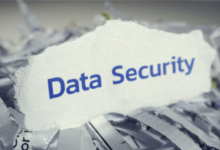Protecting Your Funds: Cybersecurity Essentials for Digital Wallet Users

In the digital age, managing your finances through digital wallets has become increasingly popular. These tools offer convenience and flexibility, allowing users to store and access their payment information, manage investments, and conduct transactions with ease. However, as digital wallets become more prevalent, so do the cyber threats targeting them. For those involved in crypto prop trading, ensuring the security of digital wallets is paramount. This blog post explores essential cybersecurity practices to protect your funds and maintain your financial safety.
Understanding Cyber Threats
Before diving into protective measures, it’s crucial to understand the types of cyber threats that can target digital wallets:
1. Phishing Attacks: Phishing involves deceiving users into providing sensitive information, such as login credentials or personal details, by posing as a legitimate entity. Phishing attempts often come through emails, texts, or fake websites that look authentic.
2. Malware: Malware, including viruses, trojans, and ransomware, is malicious software designed to infiltrate and damage systems. In the context of digital wallets, malware can steal login information or encrypt data, demanding a ransom for its release.
3. Man-in-the-Middle (MitM) Attacks: In a MitM attack, cybercriminals intercept and potentially alter communication between two parties. For digital wallets, this could mean intercepting transaction details or login credentials, leading to unauthorized access.
4. Social Engineering: Social engineering manipulates individuals into revealing confidential information through deceptive means, such as pretending to be a trusted contact or authority figure.
Read also: What role does technology play in advancing global education, particularly in under-resourced areas?
Cybersecurity Essentials for Digital Wallet Users
1. Use Strong, Unique Passwords
The foundation of cybersecurity begins with strong, unique passwords. Avoid using easily guessable passwords or reusing the same password across different platforms. Create passwords with a mix of letters, numbers, and special characters. To manage multiple passwords securely, use a reputable password manager, which can generate and store complex passwords for you.
2. Enable Two-Factor Authentication (2FA)
Two-factor authentication adds an extra layer of security by requiring two forms of verification before granting access. Typically, this involves something you know (like your password) and something you have (like a verification code sent to your phone). Enabling 2FA makes it significantly more difficult for cybercriminals to gain unauthorized access to your digital wallet.
3. Regularly Update Software
Keeping your digital wallet software and related applications up to date is crucial for security. Software updates often include patches for vulnerabilities that could be exploited by cybercriminals. Ensure that both your digital wallet application and your device’s operating system are updated regularly to protect against the latest threats.
4. Be Cautious with Public Wi-Fi
Public Wi-Fi networks are less secure and can be a target for cyber attacks. Avoid accessing your digital wallet or conducting financial transactions over public Wi-Fi. If you must use a public network, consider using a virtual private network (VPN) to encrypt your internet connection and safeguard your data.
5. Verify Website Authenticity
When accessing your digital wallet online, ensure you are on the legitimate website. Check the URL for HTTPS and look for security indicators, such as a padlock icon in the address bar. Be wary of phishing attempts that might direct you to fake websites designed to steal your credentials.
6. Use Hardware Wallets for Cryptocurrency
For those involved in crypto prop trading or holding significant amounts of cryptocurrency, hardware wallets offer a higher level of security. These physical devices store your private keys offline, reducing the risk of online attacks. Hardware wallets are particularly effective in safeguarding your digital assets from malware and hacking attempts.
7. Monitor Your Accounts Regularly
Regular monitoring of your digital wallet accounts is essential for detecting any unusual activity. Review transaction histories and account statements frequently to identify unauthorized transactions or anomalies. Quick action in response to suspicious activity can help prevent further financial loss.
8. Educate Yourself About Cybersecurity Threats
Staying informed about the latest cybersecurity threats and best practices is crucial for protecting your digital wallet. Follow reputable sources for cybersecurity news, and familiarize yourself with common scams and attack techniques. Awareness is a key defense against cyber threats and helps you recognize and respond to potential risks effectively.
Conclusion
Protecting your digital wallet is vital in safeguarding your financial assets, especially if you are involved in crypto prop trading. By implementing strong passwords, enabling two-factor authentication, keeping software updated, and practicing caution online, you can significantly reduce the risk of cyber threats. Staying vigilant and informed about cybersecurity best practices ensures that your digital wallet remains a secure and reliable tool for managing your finances and trading activities. In a world where cyber threats are constantly evolving, taking proactive steps to protect your funds is not just a choice—it’s a necessity.





